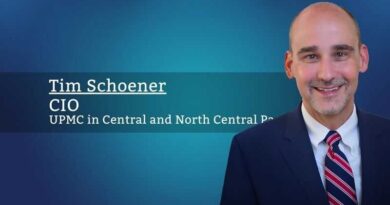Data Governance: A Matter of Trust
By Lee David Milligan, VP & Chief Medical Information Officer, Asante
A few years after going live on our enterprise Electronic Health Record (EHR), we decided to institute Data Governance (DG). We thought we understood the problem to be solved and the means to address it. We followed the recommended approach from our vendors and talked to a few like-minded healthcare institutions. We had a checklist and, though annoyed to an extent, we were going to put DG in place. Like installing a new light fixture, we approached this as a project with process-related deliverables. We had recently launched our enterprise data warehouse, and DG seemed like the reasonable thing to do. We focused on operational terminology and engaged a variety of stakeholders. Then, despite planning and preparation, we fizzled. Our participants didn’t fully understand what we were trying to accomplish nor how this DG work connected to our business value. Soon, we recognized that we didn’t fully understand what we needed to achieve or even what Data Governance is supposed to be.
At the same time, we were architecting a comprehensive analytics strategy to maximize data productivity and to prepare for Population Health. As a part of this overhaul, we elected to scrap our earlier v.1.0 efforts at Data Governance and take a fresh look at both the problem to be solved and the best framework for delivering solutions. We reached out to external industries, external health systems, and academia. We spent six months investigating. What evolved out of this fresh approach has led to an efficient and robust mechanism to ensure both data quality and usability of delivered information. Here, utilizing a Q+A format, I’d like to share a small portion of what we learned in our approach to DG and share a few of the accomplishments thus far.
Begin with the why. What problem are you trying to solve with Data Governance?
If the purpose of analytics is to deliver actionable insights into the operational effort, then without confidence in said data, it would be foolish to take action. First, it’s about the health of our patients. Agency for Healthcare Research and Quality (AHRQ) reported the results of a five-year study on Hospital Acquired Conditions (HAC) and noted that high-quality data was a driving force for improvements which included a 21 percent reduction in HACs, 3 million fewer adverse events, 125,000 lives saved and $28 billion in savings.
Closer to home, if our physicians and operational leadership don’t trust the data, then data generation is a futile exercise. When I put productivity or quality data in front of a doc, we need to know: (a) how confident are we in the quality of this data? and (b) how accurate is the data? Ultimately, it boils down to: what is the believability of the information that is presented? Although not a binary circumstance, the information quality must exceed an agreed upon threshold to motivate action.
We recognized early on that Data Governance could signify many things to many individuals
After considering the many variables at play, we ultimately decided on a mission statement, which captures the essence of our driving purpose:
To develop an organizational structure empowered with ensuring that our data assets are fit for use.
Data Governance can encompass many different aspects, how did you decide on where to focus?
We recognized early on that Data Governance could signify many things to many individuals. It’s easy to boil the ocean here. We were licking our wounds a bit from our DG 1.0 efforts and, by design, elected to focus our efforts on only four critical pillars that are directly applicable to a health system whose primary mission is patient care:
Accountability: We instituted four levels of responsibility from the C-Suite to Data Governors to Data Stewards to the Office of Data Governance. This includes both producers and consumers of data.
Proper Use: This refers to our ability to communicate accurately. When I say ‘Length of Stay” and you say “Length of Stay,” do we both mean the same thing? When I read a report, which highlights “Delivering Physician,” do I know the definition of this term? Have we defined and agreed on key terms?
Quality: What level of confidence do we have in the information provided? Do we understand the data progeny? Have we profiled the data? Do we know the life cycle of the data? Has a data steward overseen the quality?
Movement: Data can move from our enterprise health system to other entities such as a payer database. It can also move from system to system within our health system (think patient satisfaction scores into our data warehouse). Do we understand how that data is collected, stored and moved? Are we sure that we have adhered to compliance and InfoSec requirements?
I haven’t heard you mention a specific Data Governance vendor or consultant. Who do you use for your DG platform and who have you consulted?
There are many competent consultants in this arena. However, we made a strategic choice to dedicate internal resources to developing our enterprise Data Governance effort, leveraging the skillset of our DG Manager and others. We recognized that we lacked specific competencies, but given our dedication to getting this right, we were convinced that we would expand our world and connect with entities which would help guide us. Ultimately, this proved to be correct as we’ve partnered with 13 other health systems throughout the country—each trying to solve the same puzzle.
Also, we built, de-novo, our data profiling tool, internal glossary, and data quality reporting mechanism. Eventually, we will look to purchase a DG Platform, but developing these products internally taught us great lessons on what we actually need versus what may be commercially marketed.
What are some insights that you have gleaned from this process thus far?
As our DG efforts are rooted in operational and clinical accountability, the work has been very public. This element alone has allowed executive leaders and physicians to peer into the world of DG in a fashion which provides confidence in the work we are doing. Recently, a respected physician colleague told me that “although no data is perfect, I’m confident that our system has the checks and balances in place to get it right.”
Seeing specific data quality indicators shows us to what degree we can trust the data.
Transparently seeing what data exists within our enterprise, we can leverage it to manage operations more efficiently.
Data Provenance allows us to see where the data originated.
Data lineage allows us to see how the data is transformed into systems within our enterprise.
We remain on our journey to a fully executed, enterprise Data Governance program within our integrated health system business model. At present, I consider our effort to be only part-way to this goal. Our 2.0 efforts have allowed us to establish a framework for scalability while assuring accountability within the operational leadership. Additional discussion regarding the change management elements of instituting Data Governance may be a worthwhile future topic.



